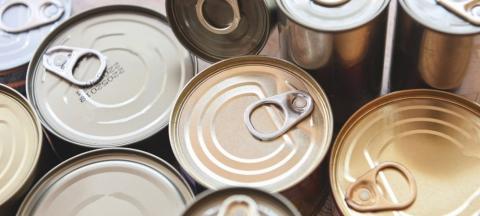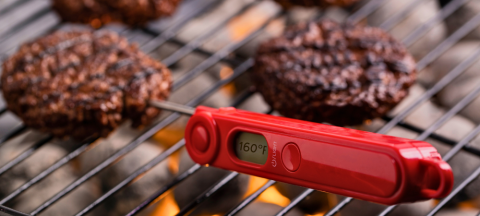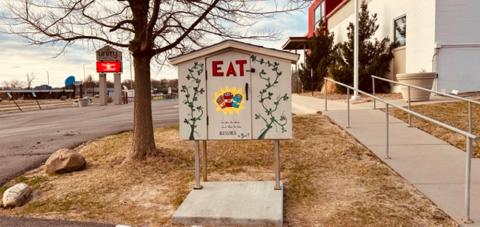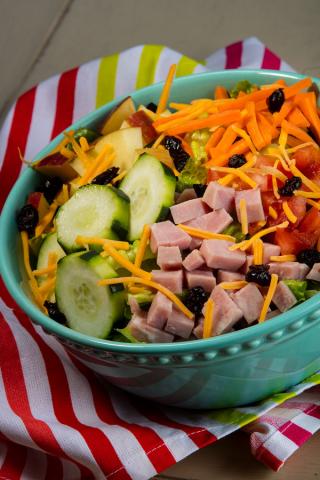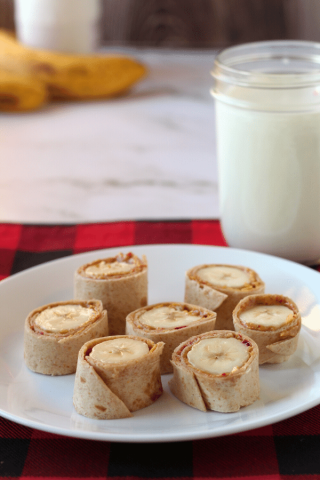
Carrying your food in an insulated container with a freezer gel pack not only keeps your meal safe to eat but helps prevent boring bagged lunches!
Make extra of a favorite main dish and enjoy it a day or two later as a packed lunch at work or school. Use an insulated container and gel freezer pack to carry perishable foods that must be kept cold. Bacteria multiply rapidly if food is held in the "danger zone" of 40°F to 140°F for more than 2 hours (1 hour when the temperature is above 90°F).
Keeping food at a safe temperature is important when carrying your lunch. Let your "sack lunch" be limited only by your imagination through following these food safety tips:
Preparation
- To serve safe food in carried lunches, the food must start out safe. Follow general food safety practices of cooking foods to safe temperatures, working with clean and using clean utensils and a clean work surface, cooling and storing food properly.
- Wash hands with soap and water. Wash the lunch container and thermos with hot water and detergent after every use. If you use a paper bag, purchase bags specifically for carrying sack lunches and use a clean one each time.
- Prepare just the amount of perishable food that can be eaten to avoid possible safety problems with leftover perishable foods.
- Use thermos containers to keep liquids or semi-fluid foods cold or hot. Fill shortly before leaving with your lunch. For hot foods, preheat the thermos by filling it with hot water and letting it stand for a few minutes. Pour out water and add steaming hot food. For cold foods, fill your thermos with cold water first and let stand a few minutes before emptying the water and adding cold foods.
Keep Cold Foods Cold
- Perishable foods served cold must be kept cold. These include the following foods and items prepared with these foods: Meat, poultry, seafood, eggs, tofu; Dairy products (milk, cheese and yogurt); Opened canned fruit, cooked fruits and vegetables and cut/peeled fresh fruits and vegetables; Pasta, rice and cooked vegetables and fruits
- If lunches are packed the night before, keep perishable foods refrigerated until you are ready to leave with your lunch. Add cookies, chips or other foods that lose crispness in the morning.
- If possible, store lunches containing cold perishable foods in a refrigerator until lunchtime. When refrigeration is not possible, carry already chilled foods in an insulated lunch container. Include an ice pack, freezer gel pack, or water frozen in leakproof plastic freezer containers. Place your lunch in a cool place out of direct sunlight
Reheating Foods in the Microwave
- If food is reheated in the microwave at work, reheat until they are steaming hot throughout.
- Follow package directions for frozen convenience meals.
Foods Safe at Room Temperature
Packed lunch foods that are safe at room temperature are:
- Peanut butter sandwiches
- Popcorn
- Bread, crackers, bagels
- Fresh fruit in the peel
- Unopened single-serving containers of fruit, fruit juice and pudding
- Commercially prepared meats, poultry, seafood, and dried beans (such beans and franks) that can be opened and eaten immediately
- Dried fruits
- Nuts
- Cookies, cereal bars
Article originally written by Alice Henneman, MS, RD. Reviewed and updated in 2020.
Sources:
Keeping "Bag" Lunches Safe, United States Department of Agriculture (USDA)
BAC to School: Pack a Safe Lunch 101, Partnership for Food Safety Education
This article has been peer-reviewed.
Tags:
Feedback Form
Feedback Form
If you do not see the article, please scroll up the page.
